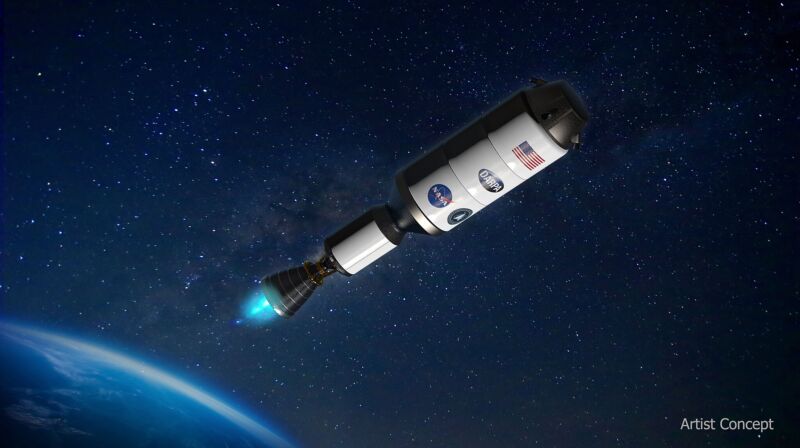
DARPA
Phoebus 2A, the most powerful space nuclear reactor ever made, was fired up at Nevada Test Site on June 26, 1968. The test lasted 750 seconds and confirmed it could carry first humans to Mars. But Phoebus 2A did not take anyone to Mars. It was too large, it cost too much, and it didn’t mesh with Nixon’s idea that we had no business going anywhere further than low-Earth orbit.
But it wasn’t NASA that first called for rockets with nuclear engines. It was the military that wanted to use them for intercontinental ballistic missiles. And now, the military wants them again.
Nuclear-powered ICBMs
The work on nuclear thermal rockets (NTRs) started with the Rover program initiated by the US Air Force in the mid-1950s. The concept was simple on paper. Take tanks of liquid hydrogen and use turbopumps to feed this hydrogen through a nuclear reactor core to heat it up to very high temperatures and expel it through the nozzle to generate thrust. Instead of causing the gas to heat and expand by burning it in a combustion chamber, the gas was heated by coming into contact with a nuclear reactor.

Tokino, vectorized by CommiM at en.wikipedia
The key advantage was fuel efficiency. “Specific impulse,” a measurement that’s something like the gas mileage of a rocket, could be calculated from the square root of the exhaust gas temperature divided by the molecular weight of the propellant. This meant the most efficient propellant for rockets was hydrogen because it had the lowest molecular weight.
In chemical rockets, hydrogen had to be mixed with an oxidizer, which increased the total molecular weight of the propellant but was necessary for combustion to happen. Nuclear rockets didn’t need combustion and could work with pure hydrogen, which made them at least twice as efficient. The Air Force wanted to efficiently deliver nuclear warheads to targets around the world.
The problem was that running stationary reactors on Earth was one thing; making them fly was quite another.
Space reactor challenge
Fuel rods made with uranium 235 oxide distributed in a metal or ceramic matrix comprise the core of a standard fission reactor. Fission happens when a slow-moving neutron is absorbed by a uranium 235 nucleus and splits it into two lighter nuclei, releasing huge amounts of energy and excess, very fast neutrons. These excess neutrons normally don’t trigger further fissions, as they move too fast to get absorbed by other uranium nuclei.
Starting a chain reaction that keeps the reactor going depends on slowing them down with a moderator, like water, that “moderates” their speed. This reaction is kept at moderate levels using control rods made of neutron-absorbing materials, usually boron or cadmium, that limit the number of neutrons that can trigger fission. Reactors are dialed up or down by moving the control rods in and out of the core.
Translating any of this to a flying reactor is a challenge. The first problem is the fuel. The hotter you make the exhaust gas, the more you increase specific impulse, so NTRs needed the core to operate at temperatures reaching 3,000 K—nearly 1,800 K higher than ground-based reactors. Manufacturing fuel rods that could survive such temperatures proved extremely difficult.
Then there was the hydrogen itself, which is extremely corrosive at these temperatures, especially when interacting with those few materials that are stable at 3,000 K. Finally, standard control rods had to go, too, because on the ground, they were gravitationally dropped into the core, and that wouldn’t work in flight.
Los Alamos Scientific Laboratory proposed a few promising NTR designs that addressed all these issues in 1955 and 1956, but the program really picked up pace after it was transferred to NASA and Atomic Energy Commission (AEC) in 1958, There, the idea was rebranded as NERVA, Nuclear Engine for Rocket Vehicle Applications. NASA and AEC, blessed with nearly unlimited budget, got busy building space reactors—lots of them.
